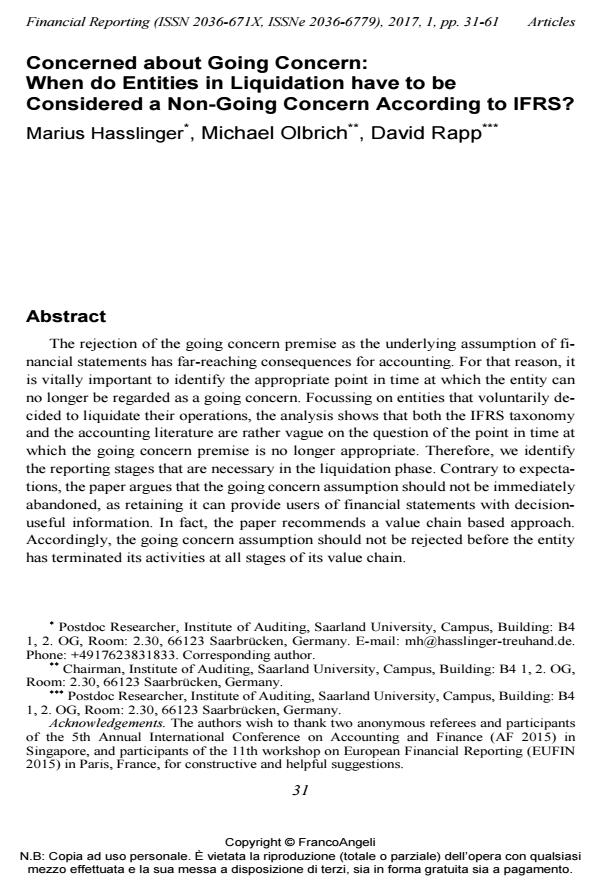Concerned about Going Concern: When do Entities in Liquidation have to be Considered a Non-Going Concern According to IFRS?
Journal title FINANCIAL REPORTING
Author/s Marius Hasslinger, Michael Olbrich, David Rapp
Publishing Year 2017 Issue 2017/1
Language English Pages 31 P. 31-61 File size 315 KB
DOI 10.3280/FR2017-001002
DOI is like a bar code for intellectual property: to have more infomation
click here
Below, you can see the article first page
If you want to buy this article in PDF format, you can do it, following the instructions to buy download credits

FrancoAngeli is member of Publishers International Linking Association, Inc (PILA), a not-for-profit association which run the CrossRef service enabling links to and from online scholarly content.
The rejection of the going concern premise as the underlying assumption of financial statements has farreaching consequences for accounting. For that reason, it is vitally important to identify the appropriate point in time at which the entity can no longer be regarded as a going concern. Focussing on entities that voluntarily decided to liquidate their operations, the analysis shows that both the IFRS taxonomy and the accounting literature are rather vague on the question of the point in time at which the going concern premise is no longer appropriate. Therefore, we identify the reporting stages that are necessary in the liquidation phase. Contrary to expectations, the paper argues that the going concern assumption should not be immediately abandoned, as retaining it can provide users of financial statements with decisionuseful information. In fact, the paper recommends a value chain based approach. Accordingly, the going concern assumption should not be rejected before the entity has terminated its activities at all stages of its value chain.
Keywords: Going concern, liquidation, IFRS, winding-up.
Marius Hasslinger, Michael Olbrich, David Rapp, Concerned about Going Concern: When do Entities in Liquidation have to be Considered a Non-Going Concern According to IFRS? in "FINANCIAL REPORTING" 1/2017, pp 31-61, DOI: 10.3280/FR2017-001002